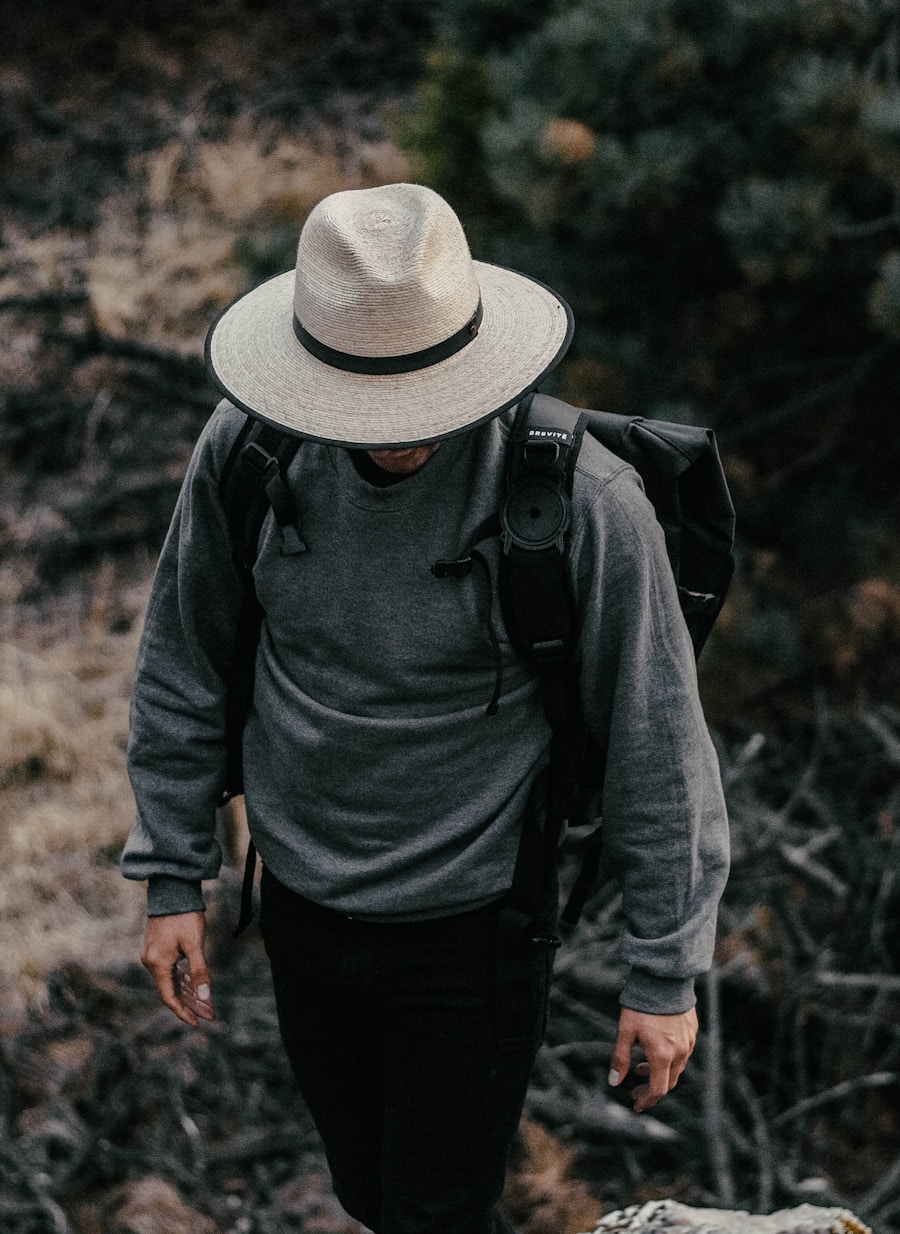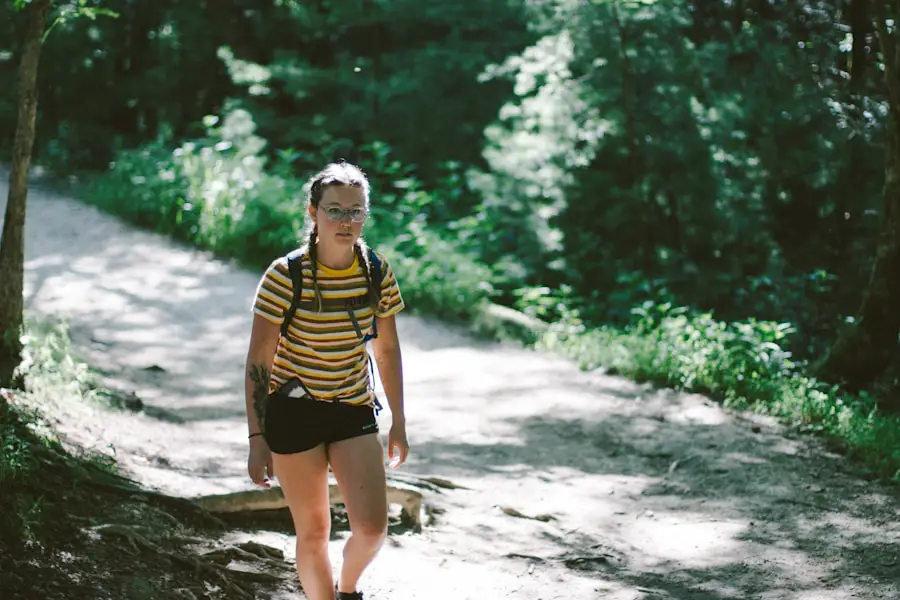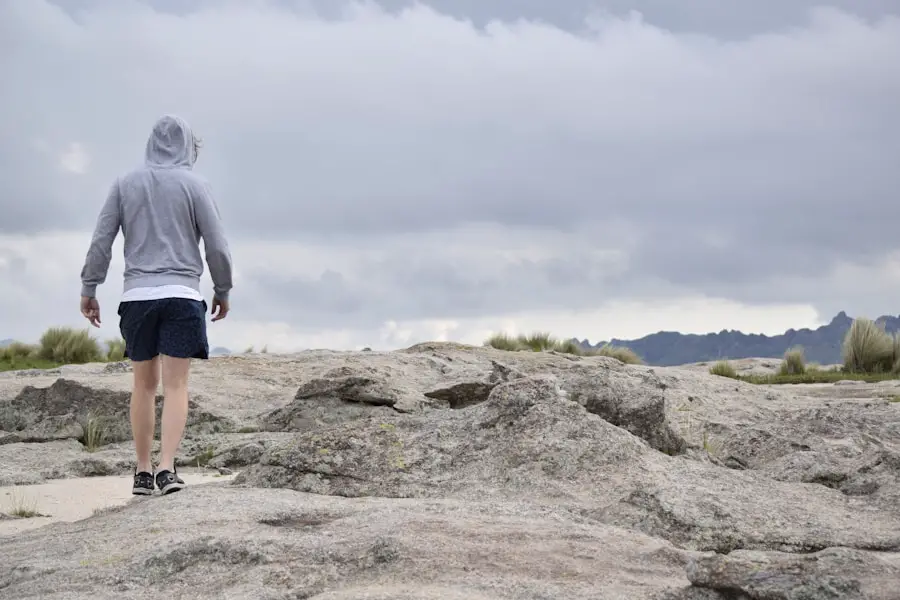When embarking on a hiking adventure, the significance of appropriate attire cannot be overstated. Proper hiking clothing serves as a protective barrier against the elements, ensuring that hikers remain comfortable and safe throughout their journey. The right attire can help regulate body temperature, wick away moisture, and provide protection from environmental hazards such as sun exposure, insects, and rough terrain.
Wearing suitable clothing can mean the difference between an enjoyable hike and a miserable experience, particularly in unpredictable weather conditions. Moreover, the psychological aspect of wearing the right gear should not be overlooked. When hikers feel comfortable and well-equipped, they are more likely to enjoy their surroundings and focus on the beauty of nature rather than being distracted by discomfort.
This mental state can enhance the overall hiking experience, allowing individuals to immerse themselves in the tranquility of the outdoors. Therefore, investing time and resources into selecting proper hiking attire is essential for both physical comfort and mental well-being.
Key Takeaways
- Proper hiking attire is important for comfort, protection, and performance on the trails.
- Choosing the right footwear is crucial for preventing blisters, providing support, and ensuring stability on different terrains.
- Layering clothing for hiking provides versatility and protection against changing weather conditions.
- Sun protection with hats, sunglasses, and sunscreen is essential for preventing sunburn and heat-related illnesses.
- Selecting the best fabric for hiking clothing can enhance breathability, moisture-wicking, and durability for long hikes.
Choosing the Right Footwear for Hiking
Choosing the Right Style
For instance, trail runners are ideal for well-maintained paths and warmer weather due to their lightweight construction and breathability. Conversely, if one plans to tackle rugged trails or snowy conditions, a sturdy pair of waterproof boots with ankle support is essential.
The Importance of Fit
In addition to style and function, fit is paramount when selecting hiking footwear. A proper fit ensures that the foot is secure without being overly tight, which can lead to blisters and discomfort during long hikes. It is advisable to try on hiking shoes with the socks intended for use on the trail, as this can affect sizing.
Additional Features to Consider
Furthermore, considering the terrain and duration of the hike will help determine whether additional features such as toe protection or a cushioned insole are necessary. Ultimately, investing in high-quality footwear tailored to individual needs can significantly enhance the hiking experience.
Layering for Comfort and Protection

Layering is a fundamental principle in outdoor clothing that allows hikers to adapt to changing weather conditions while maintaining comfort. The layering system typically consists of three main layers: a base layer, an insulating layer, and an outer shell. The base layer is designed to wick moisture away from the skin, keeping hikers dry and comfortable.
Fabrics such as merino wool or synthetic materials are popular choices for this layer due to their moisture-wicking properties and ability to regulate body temperature. The insulating layer serves to retain body heat, which is particularly important in cooler conditions. Fleece jackets or down vests are common options that provide warmth without adding excessive bulk.
Finally, the outer shell protects against wind, rain, and other environmental elements. Waterproof and breathable jackets made from materials like Gore-Tex or similar technologies are ideal for this purpose. By utilizing a layering system, hikers can easily adjust their clothing based on activity level and weather changes, ensuring optimal comfort throughout their trek.
Sun Protection: Hats, Sunglasses, and Sunscreen
| Product | SPF | UV Protection | Water Resistant |
|---|---|---|---|
| Sunscreen | 30 | Broad Spectrum | Yes |
| Hats | N/A | UPF 50+ | No |
| Sunglasses | N/A | 100% UV Protection | No |
Sun protection is a crucial consideration for hikers, especially during summer months when UV exposure is at its peak. Prolonged exposure to sunlight can lead to sunburns and increase the risk of skin cancer over time. Therefore, incorporating protective accessories such as hats, sunglasses, and sunscreen into one’s hiking attire is essential for safeguarding against harmful rays.
A wide-brimmed hat not only provides shade for the face and neck but also helps keep the head cool by blocking direct sunlight. Sunglasses with UV protection are equally important for protecting the eyes from glare and harmful rays. Polarized lenses can reduce glare from reflective surfaces like water or rocks, enhancing visibility on bright days.
Additionally, applying a broad-spectrum sunscreen with an SPF of at least 30 to exposed skin is vital for preventing sunburns. It is advisable to reapply sunscreen every two hours or more frequently if sweating heavily or swimming. By taking these precautions seriously, hikers can enjoy their outdoor adventures while minimizing the risks associated with sun exposure.
Selecting the Best Fabric for Hiking Clothing
The choice of fabric plays a significant role in determining the comfort and performance of hiking clothing. Different materials offer varying benefits depending on the conditions faced on the trail. Synthetic fabrics such as polyester and nylon are popular choices due to their moisture-wicking properties and quick-drying capabilities.
These materials help keep hikers dry by drawing sweat away from the skin and allowing it to evaporate quickly. Natural fibers like cotton may seem comfortable but are generally not recommended for hiking due to their tendency to retain moisture. When cotton gets wet from sweat or rain, it loses its insulating properties and can lead to chafing or hypothermia in cooler conditions.
Merino wool is an excellent alternative that combines the benefits of natural fibers with moisture-wicking capabilities. It regulates temperature effectively while remaining odor-resistant, making it suitable for multi-day hikes without frequent washing. Understanding the properties of different fabrics allows hikers to make informed choices that enhance their comfort and performance on the trail.
Essential Accessories for Summer Hiking

Stability and Support
In addition to hydration systems, lightweight trekking poles can provide stability and reduce strain on joints during steep ascents or descents. They help distribute weight more evenly and can be particularly beneficial when navigating uneven terrain or crossing streams.
Minor Injuries and Ailments
A small first-aid kit is another vital accessory that should not be overlooked; it can address minor injuries or ailments that may arise during a hike. Including items such as adhesive bandages, antiseptic wipes, and blister treatment can make a significant difference in managing unexpected situations on the trail.
Be Prepared for the Unexpected
Including these essential accessories in your summer hiking gear can make all the difference in ensuring a safe and enjoyable experience.
Considerations for Different Types of Hiking Trails
The type of hiking trail significantly influences what attire and gear are necessary for a successful outing. For example, well-maintained trails in national parks may require less specialized equipment compared to backcountry routes that demand more rugged gear due to their challenging nature. On established paths, lightweight clothing and trail runners may suffice; however, off-trail hiking often necessitates more durable clothing that can withstand thorny bushes or rocky surfaces.
Additionally, elevation changes play a crucial role in determining what hikers should wear. Trails that ascend rapidly may require layers that can be easily added or removed as temperatures fluctuate with altitude changes. In contrast, flat trails may allow for more freedom in clothing choices since temperature variations are less pronounced.
Understanding these nuances helps hikers prepare adequately for their specific trail conditions.
Tips for Staying Cool and Hydrated on the Trails
Staying cool and hydrated while hiking in warm weather is essential for maintaining energy levels and preventing heat-related illnesses. One effective strategy is to plan hikes during cooler parts of the day, such as early morning or late afternoon when temperatures are more manageable. This approach not only minimizes exposure to direct sunlight but also allows hikers to enjoy more pleasant conditions.
In addition to timing, wearing light-colored clothing made from breathable fabrics can help regulate body temperature by reflecting sunlight rather than absorbing it. Frequent breaks in shaded areas allow hikers to cool down while replenishing fluids lost through sweat. Carrying electrolyte-rich snacks or drinks can also aid in hydration by replacing essential minerals lost during physical exertion.
By implementing these strategies, hikers can enhance their comfort levels while enjoying their summer adventures in nature.
When planning what to wear for a summer hike, it’s important to consider practicality and comfort. One essential item to consider is a good pair of travel pants with hidden pockets. These pants not only provide storage for essentials like keys and phones but also offer durability and flexibility for outdoor activities. For more information on the best travel pants with hidden pockets, check out this article here.
Love travel? Join Our Facebook Community
FAQs
What should I wear when hiking in the summer?
In the summer, it’s important to wear lightweight and breathable clothing that provides sun protection and wicks away sweat. This includes moisture-wicking shirts, quick-drying shorts or pants, a wide-brimmed hat, sunglasses, and sunscreen.
What type of footwear is best for summer hiking?
For summer hiking, it’s best to wear lightweight and breathable hiking shoes or boots that provide good traction and support. Look for shoes with mesh uppers to allow for airflow and quick drying.
Should I wear layers when hiking in the summer?
While the temperatures may be warm during the day, it’s still a good idea to bring along layers for early morning or evening hikes, as well as for changes in weather. A lightweight, moisture-wicking base layer, a long-sleeve shirt, and a lightweight jacket or windbreaker are good options.
What type of accessories should I bring for summer hiking?
Accessories such as a hydration pack or water bottle, a brimmed hat for sun protection, sunglasses, and insect repellent are essential for summer hiking. Additionally, consider bringing a lightweight backpack to carry essentials like snacks, a first aid kit, and a map.
Are there any specific clothing items to avoid when hiking in the summer?
Avoid wearing cotton clothing, as it retains moisture and can lead to chafing and discomfort. Instead, opt for moisture-wicking and quick-drying fabrics that will keep you cool and dry.
